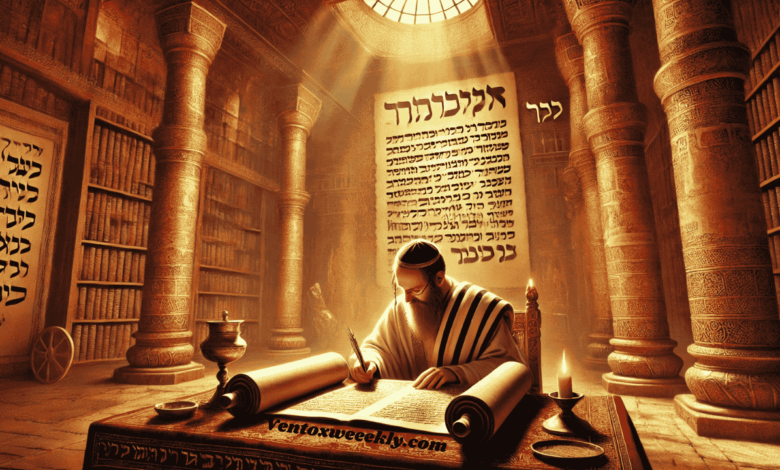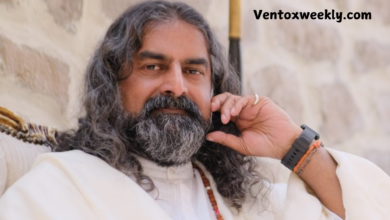Rambams List of Tanaaim: An Insight into Early Jewish Scholarship

The Peirush Mishnayos by Maimonides (Rambam), one of the greatest Jewish scholars, offers an extensive commentary on the Mishnah and provides insights into the lives and teachings of the Tanaaim. This article delves into the Tanaaim’s importance, their impact on Jewish law, and how Rambam’s commentary illuminates their contributions to Jewish scholarship.
Who Were the Tanaaim?
The Tanaaim were rabbinic sages active from around 10 BCE to 220 CE. This period marked a crucial phase in Jewish history, as these scholars were responsible for preserving and transmitting the Oral Torah, which later became codified in the Mishnah. The term “Tanna” derives from the Aramaic word “Tanna’a,” meaning “teacher” or “repeater,” highlighting their role in memorizing and teaching Jewish law.
Following the destruction of the Second Temple in 70 CE, the Tanaaim became central figures in maintaining and developing Jewish tradition during a period of uncertainty. They recorded the Oral Torah’s teachings, transforming an oral tradition into a structured and codified system of Jewish law. Their work culminated in the creation of the Mishnah, the earliest written record of the Oral Law.
Rambam’s Commentary: The Peirush Mishnayos
Rambam’s commentary on the Mishnah, written in Arabic and later translated into Hebrew, is known as the Peirush Mishnayos. This work is significant not only for its detailed analysis but also for its accessibility; Rambam aimed to simplify the Mishnah’s complex legal discussions, making them understandable for both scholars and laypeople.
Rambam’s approach was systematic and logical. He did not merely cite the teachings of the Tanaaim; he provided context, explaining their historical significance and impact on Jewish law. His commentary bridges the ancient oral traditions and the codified law, offering readers a deeper understanding of the Mishnah and its contributors.
Prominent Tanaaim in Rambam’s Commentary
In his Peirush Mishnayos, Rambam frequently references several key Tanaaim, whose contributions continue to shape Jewish legal discourse today. Let’s explore some of the most influential figures mentioned by Rambam:
Rabbi Akiva (c. 50 – 135 CE)
Rabbi Akiva is one of the most influential Tanaaim and a central figure in Jewish law. His approach to interpreting the Torah, particularly his innovative use of textual nuances, laid the groundwork for much of the Mishnah’s structure. Rabbi Akiva’s teachings span various legal matters, including agriculture and ritual purity. Rambam highlights Rabbi Akiva’s dual role as a spiritual leader and a nationalist involved in the Bar Kokhba revolt.
Rabban Yohanan ben Zakkai (c. 30 BCE – 90 CE)
Following the collapse of the Second Temple, Rabban Yohanan Ben Zakkai played a crucial role in preserving Jewish tradition. He established the academy at Yavneh, ensuring that Torah learning continued despite the upheavals of Roman rule. Rambam praises his foresight and efforts to safeguard Jewish education, emphasizing the importance of his reforms in maintaining the continuity of Jewish law.
Rabbi Yehuda HaNasi (Judah the Prince) (c. 135 – 217 CE)
The editor HaNasi, or “Rebbi,” is perhaps the most significant figure in the Tannaitic period. His work as the editor of the Mishnah, compiling the Mishnah, was a monumental achievement that preserved centuries of oral traditions. Rambam frequently references Rebbi’s organizational skills and vision, noting how the Mishnah’s structure—divided into dividends—facilitates the study of Jewish law.
Hillel the Elder (c. 110 BCE – 10 CE)
Known for his lenient and compassionate rulings, Hillel the Elder’s teachings emphasize ethics and interpersonal relationships. Rambam often cites Hillel’s balanced approach to legal reasoning, highlighting how his perspectives laid the groundwork for future Halachic (Jewish legal) debates.
Shammai (c. 50 BCE – 30 CE)
In contrast to Hillel, Shammai’s rulings were stricter and more precise. The debates between Hillel and Shammai form a central theme in many Mishnah discussions, illustrating the diversity of thought within early Jewish scholarship. Rambam discusses how these contrasting views influenced the development of Jewish law.
Rabbi Shimon Bar Yochai (c. 100 – 160 CE)
Rabbi Shimon, associated with Halakhic discourse and mysticism, is noted for his contributions to the Mishnah’s legal sections. Rambam’s commentary focuses on Rabbi Shimon’s legal rulings, emphasizing his role as a scholar and a spiritual leader.
The Impact of the Tanaaim and Rambam’s Interpretation
The Tanaaim’s efforts to codify the Oral Law in the form of the Mishnah were crucial for the continuity of Jewish practice, especially after the destruction of the Temple. Rambam’s Peirush Mishnayos builds upon this legacy by clarifying and interpreting these teachings, making them accessible to subsequent generations.
Rambam’s approach involved weighing different opinions among the Tanaaim and resolving contradictions to present a unified perspective on Jewish law. His emphasis on clarity and rationality was unique among medieval scholars, allowing him to create a comprehensive legal system that remains relevant today. By integrating the wisdom of the Tanaaim with his interpretations, Rambam ensured that Jewish law could be understood and practised by future generations.
The Continuing Influence of Rambam’s Commentary
Rambam’s Peirush Mishnayos is considered a cornerstone of Jewish scholarship. Its influence extends beyond its time, as it has shaped the study of Jewish law for centuries. The commentary is a resource for understanding the Mishnah and a guide for legal reasoning. Modern scholars continue to refer to Rambam’s interpretations, recognizing the value of his systematic and logical approach to Halacha.
Conclusion
Rambam’s Peirush Mishnayos and his comprehensive list of Tanaaim offer an in-depth look at the foundations of Jewish law. By examining the lives and contributions of these early sages, Rambam provides readers with a deeper understanding of the Mishnah and the traditions it preserves. His commentary is a testament to the enduring legacy of the Tanaaim, whose teachings continue to influence Jewish thought and practice today.
FAQs on Rambams List of Tanaaim
What is Rambam’s List of Tanaaim?
Rambam’s list of Tanaaim refers to the rabbinic sages mentioned in Maimonides’ (Rambam) commentary on the Mishnah, known as the Peirush Mishnayos. These sages, active from approximately 10 BCE to 220 CE, were responsible for preserving and transmitting Jewish oral law, which later formed the basis of the Mishnah.
Who does Rambam mention as the most significant Tanaaim?
Some of the most significant Tanaaim referenced by Rambam include Rabbi Akiva, Rabban Yohanan ben Zakkai, Rabbi Yehuda HaNasi (Judah the Prince), Hillel the Elder, Shammai, and Rabbi Shimon Bar Yochai. These figures contributed significantly to Jewish law and tradition.
Who does Rambam mention as the most significant Tanaaim?
Rambam’s Peirush Mishnayos is important because it provides detailed commentary on the Mishnah, explaining the rulings and teachings of the Tannaim. It makes complex legal concepts accessible to a broad audience and serves as a vital resource for understanding early Jewish law.
What was Rambam’s approach to the teachings of the Tannaim?
Rambam’s approach was systematic and rational. He often resolved contradictions among the Tannaim’s opinions and presented a unified legal perspective. His emphasis on clarity and logic distinguishes his work from other medieval scholars and has shaped Jewish legal thought.
How did the Tannaim contribute to Jewish law?
The Tannaim recorded and codified the Oral Torah into the Mishnah. Their rulings covered various aspects of Jewish law, from agricultural regulations and festival observance to civil and criminal law. Their efforts ensured that Jewish tradition and law remained intact during the collapse of the Second Temple.




